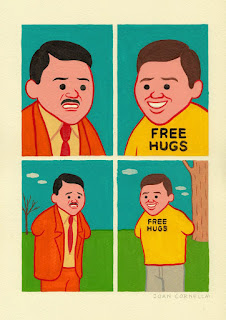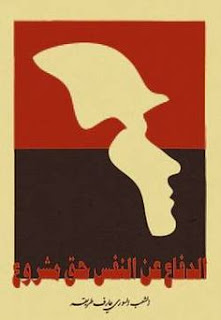China
With more internet users than any other country – 688 million, according to the government’s last count – China provides fertile ground for online abuse.
The most notorious form is the so-called “human flesh search engine”, by which internet users club together to identify and then publicly humiliate online targets who have been accused of anything from corruption to infidelity or animal cruelty.
Russia
The problem with online abuse in Russia is often not so much that the authorities do not take it seriously, but that they may actually be behind it.
Even in cases where abuse comes from non-official sources, the legal framework can act as an aggravating factor. Gay rights activists cite the controversial 2013 laws against “homosexual propaganda” as contributing to an environment where online and real-life harassment of gay people is encouraged.
Russia has no specific laws on online abuse but the phenomenon is theoretically covered by standard laws against threatening violence or murder. For cases of revenge porn, Russians are often reluctant to go to the police, with just a handful of cases each year.
UK
Online abuse in the UK can be broadly broken down into two categories. The first is the more targeted abuse that is directed towards someone often by a partner, ex-partner, colleague or classmate. Noone’s group places revenge pornography as well as stalking into this category. “It’s very targeted, very persistent, potentially extremely dangerous and can have a very powerful impact,” she says.
It is often women, victims of domestic abuse and LGBT people who are the victims of these targeted attacks. “There’s quite a hidden LGBT element in terms of revenge porn,” adds Noone, who says attackers will sometimes threaten to post pictures “outing” someone to family and friends unless blackmail demands are met.
Colombia
Colombian internet users face the same issues as those elsewhere – harassment, stalking, revenge pornography and blackmail, largely aimed at women. But in the South American country, which has been plagued by long-running conflict, the situation is complicated as this abuse sometimes comes from paramilitary groups who threaten to take the abuse from the computer screen to the victim’s home.
Olga Paz Martinez, coordinator of the Take Back the Tech project in Colombia, says such online violence is often directed against women’s rights campaigners and in particular those who speak out about sexual violence against women
The situation in Colombia is also complicated by a deeply-rooted cultural machismo, which prizes hierarchical notions of gender and traditional family roles. In some cases of abuse against women who have spoken out against sexual violence, says Paz Martinez, the victim’s husband has been contacted and told to “make your wife shut up” or the abuse will continue.
Sweden
Shortly before Christmas in 2012, nearly 30 pupils were arrested during a full-scale riot outside a secondary school in Gothenburg, Sweden’s second city.
The spark for the brawl was an Instagram account, “Sluts of Gothenburg”, set up that week by two girls aged 15 and 16, which asked people to send in photos of other local teenagers along with allegations about their sexual history.
About 200 photographs, of both boys and girls, were published on the account. Many of the pictures were accompanied by names, and most included accusations of promiscuity.
At their subsequent trial in June 2013, the two girls were found guilty of defamation, sentenced to juvenile detention and community service, and ordered to pay 15,000kr (£1,450) compensation to each of 38 victims identified by the court.
The case, which attracted massive media attention, is perhaps Sweden’s best-known incidence of online abuse and harassment – and a rare example of successful prosecution by police and judicial authorities battling, campaigners say, inadequate legislation and technology they do not fully understand.
Australia
Australia has broad criminal laws that could be used to prosecute individuals for online abuse, but a consistent problem raised is education across the board.
The most important federal law that covers this area is an offence in the Criminal Code that makes it illegal to “menace, harass or threaten” using a carriage service. This has been used to punish serious cases of abuse on social media sites such as Facebook or Twitter.
There is also a plethora of state and territory laws that can operate in different circumstances. In some states, such as New South Wales, making threats is an offence in itself. Although mere words won’t generally be considered assault, in some very serious cases they have been found by courts to be sufficient to constitute an offence.
US
In 2014, the journalist Amanda Hess chronicled her efforts to engage with the American criminal justice to end two cases of cyberstalking. The first time she went to police, in 2009, it was after a reader began issuing graphic rape threats online and then escalated this to phone calls; the police refused to do anything unless the man making the threats showed up at her apartment.
Research into online abuse by Pew in 2014 said that 40% of people had experienced some form of harassment on the internet – and that young women were among the most commonly targeted groups.
In June 2015, the US supreme court decided in favour of Anthony Elonis, who posted graphic depictions on Facebook of his desire to kill his estranged wife, saying they weren’t a crime if he didn’t intend to follow through and the trial hadn’t established Elonis’ intent.
Prof Danielle Citron, an expert in law and online harassment, told Fast Companythat there was an small upside to Elonis’ win: “It implicitly suggests that threats online are no different [than threats made via other interstate communication methods]” – which was not the case before the decision.
Citron suggested a few solutions, including making sure that laws are technology and platform agnostic; allowing prosecutors to present to judges and juries a totality of the abuse; and increasing penalties for those convicted.
































